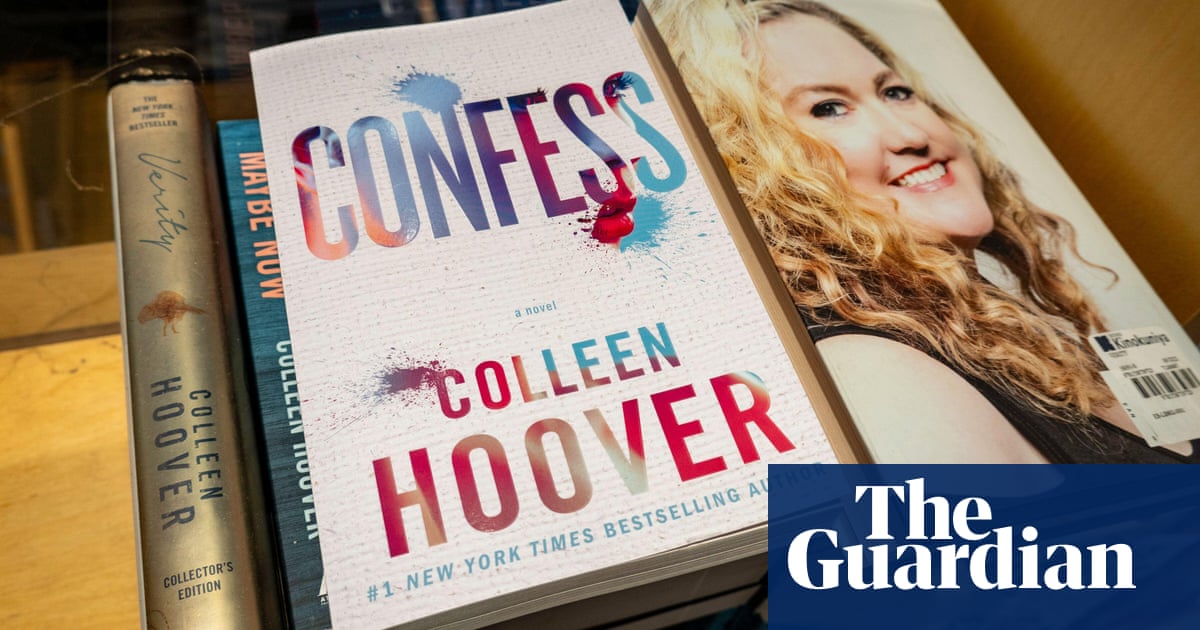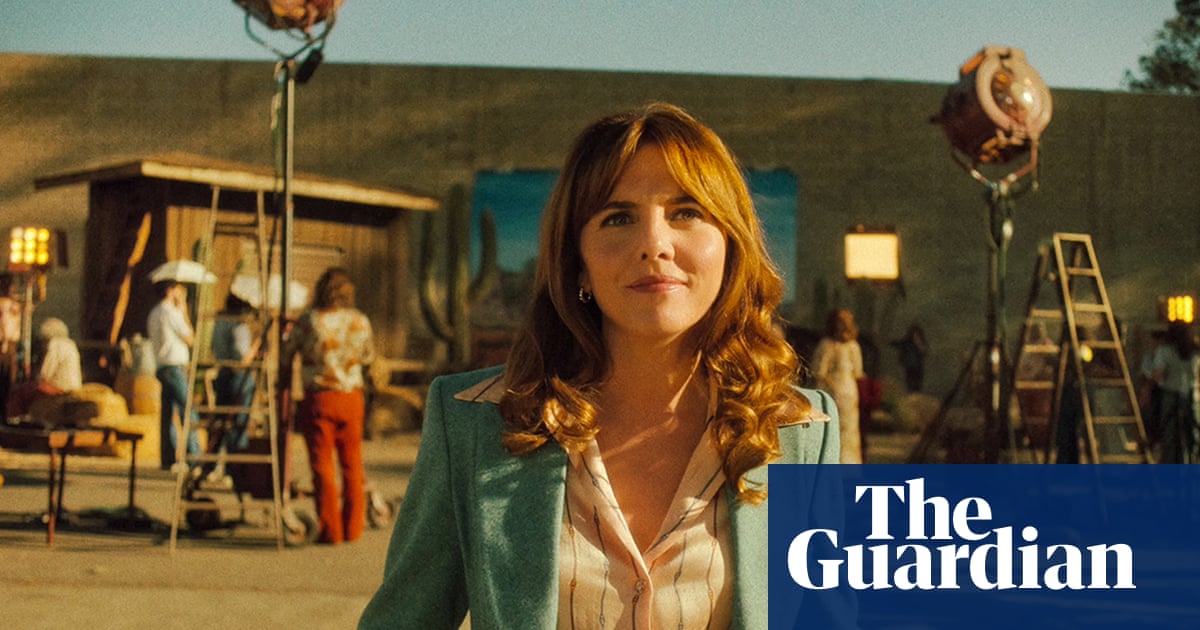
ew of us would anticipate feeling an emotional connection with a swarm of ants. But in episode three of A Perfect Planet, when a colony of fire ants build a raft using their bodies to survive flooding in the Amazon, only the concrete-hearted would fail to be moved by their resilience. As the raft sailed across the water, I sobbed.
Emotion is often close to the surface when watching wildlife programmes; something I do a lot. It goes hand-in-hand with my need to smell forest mulch, stare at lichen and stalk woodpeckers most days to feel alive. From being a child whose personality was rooted in The Really Wild Show and a magnifying glass, to a grown woman who will watch anything from Winterwatch to Netflix’s 72 Dangerous Animals to get a fix, these shows have always been a sanctuary: a source of wonderment and comfort. But this passion is far from singular.
The BBC began to make mainstream nature documentaries in the 1950s. Since then, the genre – and our appetite for it – has grown and grown. The central figure, of course, is Sir David Attenborough. His first series, Zoo Quest, which ran from 1954 to 1963, was popular. But Life on Earth, broadcast in 1979, went stratospheric, watched by 15 million in the UK. Streaming services now mean that major programmes are less likely to be a collective, real-time “event”, but according to the BBC, there have been more than 7m streams of A Perfect Planet on iPlayer since it aired on 3 January.
The timing of A Perfect Planet was serendipitous, says Huw Cordey, the series producer, who has worked with Attenborough for 20 years. “As I was seeing more people rediscovering nature in woodlands and parks, I hoped that renewed curiosity would be further lit up by the series.” This makes sense: we can enjoy local spaces in moderation at the moment, but we can travel through our screens and be reminded that there is still a beautiful world out there. Is escapism – and a hunger to be wowed – behind the enduring popularity of nature shows?
Cordey thinks so. “Expectation is so high and animal behaviour doesn’t change much, so we have to up our game,” he says. The big “blue chip” series are characterised by rich orchestral scores, high production values and pioneering footage. Each series leaves us more slack-jawed than the last. “We ask ourselves: what new sequences are we going to show? And how can we improve on what’s been done before?” he says. “Planet Earth was the first time anyone filmed from a long lens in a helicopter. With A Perfect Planet, drone technology helped us reimagine things. For hunting scenes, we wanted to feel like we were on the feet of the predators.”
The most extraordinary vignette from A Perfect Planet was a flock of breeding flamingos on the toxic waters of Lake Natron in Tanzania. Flightless chicks have to travel six miles from their nests to meet their parents at the lake’s edges, risking being eaten by marabou storks. It is impossible to not identify with them. For those that make it, a nutritious, Schiaparelli-pink meal of algae and blood is waiting in the beaks of their red-eyed parents. It is a dazzling scene that will stay with me for ever; precisely the reaction Cordey hopes for.
“We push ourselves constantly, moving in real time with technological advances,” he says. “We filmed the flamingos with a drone and I just think it’s an incredible scene.” Attenborough said it was “one of the most memorable sequences I’ve seen on television”.
The sense of wonder felt by those involved in making wildlife programmes is palpable. It feels as if the journey is shared. Springwatch and Winterwatch, for example, are about wildlife, but also the presenters. Michaela Strachan has co-presented since 2012 and was devastated that travel restrictions prevented her from working on Winterwatch this year. “I watch it every night feeling very frustrated,” she says over Zoom from her home in Cape Town. “It’s more than a job. It’s our life, our family.”
Strachan’s warmth and enthusiasm is infectious; a perfect foil for Chris Packham’s more assiduous approach. As a double act, they are perfect. “Chris is very much into the detail, whereas I’m into the whole experience. I love talking to people and Chris …” she says, laughing. “Well, he probably prefers animals. But we complement each other.”
However, Strachan admits that not everyone is a fan. “We’ve had feedback that some people don’t like the chat,” she says. I find this sad. “You can’t please everyone,” she says, with a shrug. The day before, Strachan had filmed a piece for ITV’s This Morning about penguins in South Africa. “They wanted uplifting stuff because people are stuck at home. But I saw a tweet afterwards that said: ‘Oh fuck off with your sunshine, Michaela,’ so it obviously didn’t work on that particular chap.”
I have been invested in both presenters since The Really Wild Show. Frankly, Strachan was my childhood hero: her energy, sense of adventure, her way with animals. I wanted to be her, down to the chino shorts and lace-up boots. I tell her, and about being inspired along with some primary school friends to set up a Whale and Dolphin Conservation Society. We met bi-monthly to discuss our conservation efforts and once raised £20 at a village fete. “Oh goodness. I’ll have to tell my son; he just finds me consistently embarrassing. I can say: ‘Look, someone thinks I’m cool!’”
We talk about The Really Wild Show (1986 to 2006) and whether a generation of naturalists were inspired by it. “It is the thing I am most proud of,” says Strachan. “We did really hard-hitting stuff. Towards the end of the series, we did a special on the bear bile trade in China. No one in adult telly would touch it. They said it was too miserable. But we did it for kids! I’m so proud of that. It was teaching young people that there is no easy answer with conservation. We put the problems on the table and said: OK, you can research and debate this now.”
As conservation has grown into a much bigger topic, the role of nature programming has changed. “When I started out, it was all quite matter-of-fact; this animal does that, this animal is beautiful,” says Cordey. “Over the last 15 years, things have become more character-driven. We are aware that people feel emotionally connected to the animals and their narratives.” This is necessary to tell the wider story of their survival and avoid what Cordey calls the “the switch-off factor”. In the 1990s, he says, commissioners talked about “the C-word: conservation was thought to lose people. We cannot ignore it now, but we have to keep the audience.”
Strachan agrees: “It’s a tricky time for wildlife telly because people are feeling downbeat. The world is a mess. The last thing they want is to be preached to, so you have to do it cleverly.”
We may continue to be moved by the intimate challenges of the wildlife we watch because they mirror our own. “We absolutely project our own humanity on to these animals. There is so much tribulation and humour,” says Cordey, recalling the absurd, heartbreaking birds of paradise courtship dance from Planet Earth: “That was a very anthropomorphic sequence,” he says.
Strachan feels the dark humour in nature can be cathartic, too: “Some natural behaviour is so hideous you want to laugh. I watched a programme that showed a wasp paralyse a spider, then lay eggs inside it. The larvae ate it from the inside out. We judge that with our emotions and might then think about how harshly we judge ourselves. That’s powerful.”
Research has shown that even short bursts of watching nature shows can have a positive effect on our emotions and decrease anxiety levels. Last year, researchers at the University of Exeter published a study that shows these programmes can counteract the boredom associated with being isolated indoors. When touch has been absent for so many during the pandemic, watching animals interacting physically may be vicariously soothing.
“The brain processes sensory experiences in different ways; we can ‘feel’ the comfort of touch by seeing it on TV, with humans and animals,” says Dr Katerina Fotopoulou, professor of psychodynamic neuroscience at University College London. Her laboratory is about to publish a study that shows people who reported the highest anxiety associated with lack of touch found seeing “pet touch” more soothing and “linked to down-regulated anxiety” than human-to-human touch.
Emotional exchanges between humans and animals are powerful. Without language, the connection is primitive. Such encounters are moving to watch, but also grounding. (Watching YouTube clips of Gordon Buchanan’s The Bear Family and Me has calmed my nervous system down on many occasions.) Strachan wonders whether part of the appeal is a yearning for simplicity.
“We have become so complex and unsure of our roles as a species that when we watch wildlife and see that the essence of their being is survival and procreation, there is some envy there,” she says. “Well, I know I feel that sometimes.” I suspect that millions of us would agree.












